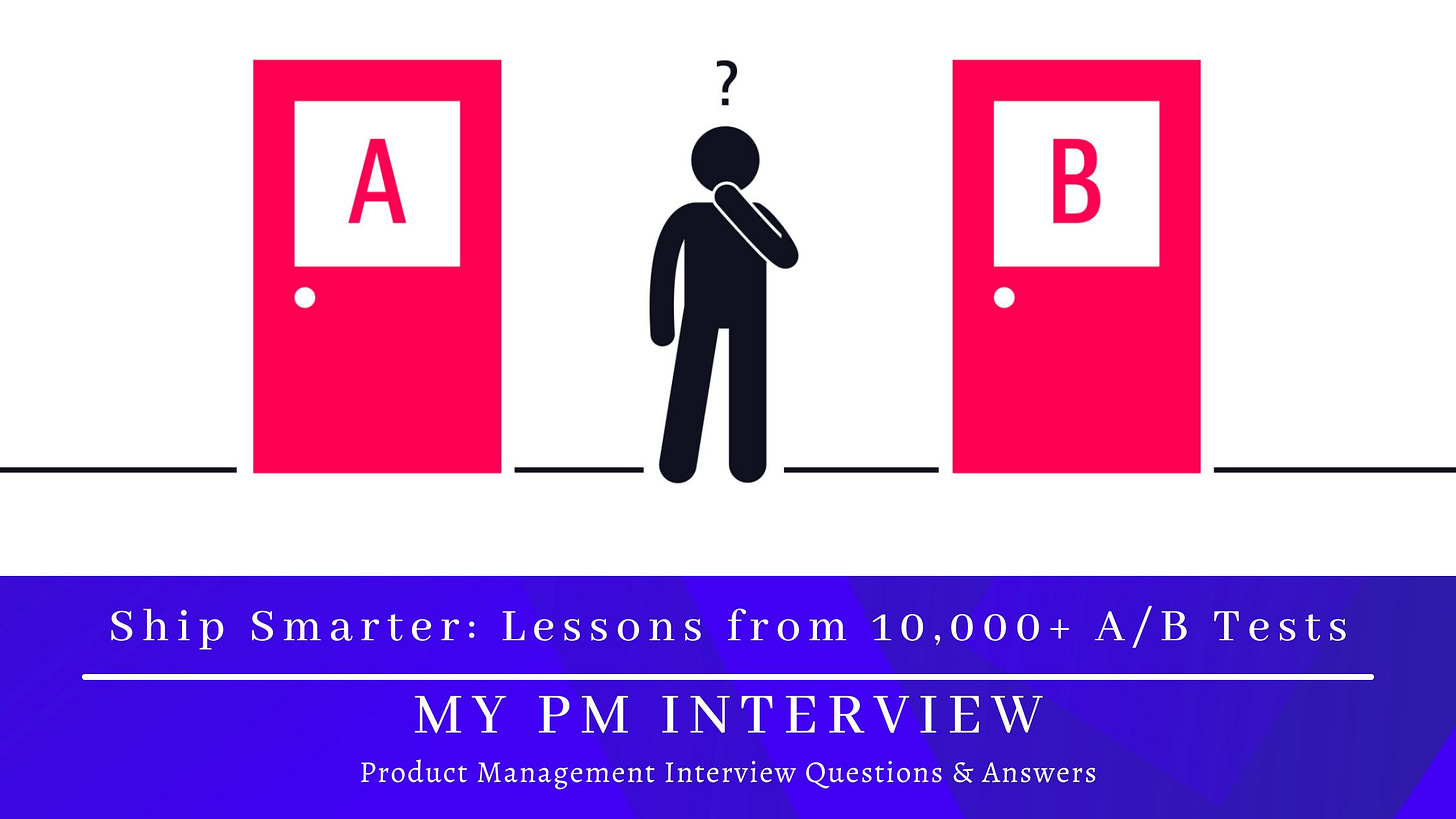Ship Smarter: Lessons from 10,000+ A/B Tests
Why Most Ideas Fail (And Why That's a Good Thing): The Real Power of Experimentation
Let’s start with an uncomfortable truth: most of your ideas are wrong.
Not because you’re not smart. Not because your team isn’t brilliant. But because the human brain is hardwired to be overconfident. We fall in love with our solutions. We assume we know what users want. We ship features that feel “obvious.”
And then reality hits.
In company after company—across tech giants and fast-growing startups—the data tells the same story: 80% to 90% of product experiments fail to move the needle. Some do nothing. Others make things worse.
It’s humbling. It’s frustrating. But it’s also the best thing that can happen to your product team.
Because that failure? That’s data. That’s learning. That’s how you build better.
The most dangerous teams aren’t the ones that move slowly. They’re the ones that ship blindly—confident they’re “right,” never realizing the damage they’re doing until it’s too late.
Small Changes, Massive Impact:
Why You Should Test Everything
Let’s play a game.
Imagine a search engine tweaks its ad layout—just slightly. Moves the second line of ad copy above the title line. Total engineering time? Maybe two hours.
Guess what happened?
Revenue spiked. By double digits. No downside to user experience. Just a simple reordering of content that unlocked one of the most profitable changes in that product’s history.
And it’s not a one-off.
Another experiment tried opening listings in a new tab instead of the same window. Again—tiny tweak, big impact. One of the best-performing search changes on a major travel site. Users stayed longer, clicked more, converted better.
These aren’t “bold bets” or multi-quarter epics. They’re inch-level shifts. And that’s the magic of experimentation: you don’t know what works until you try.
Even tiny bug fixes, UI shifts, or copy changes can have unintended consequences—positive or negative. That’s why you don’t just test “big launches.” You test everything.
Because that one-hour tweak? It might just pay your team’s salary for the year.
The Portfolio Approach:
Balancing Big Swings and Safe Bets
Let’s get real: not every experiment will be a home run. In fact, most won’t even make it to first base.
But that’s okay. Because good teams don’t bet everything on a single swing. They build a portfolio.
Here’s how it works:
Low-risk, incremental experiments: These are your bread and butter. You test button colors, placements, small flow optimizations. They rarely fail catastrophically. You learn fast. You ship frequently. And over time, the gains compound—inch by inch, click by click.
High-risk, high-reward bets: These are the moonshots. The radical redesigns. The wild new concepts. Most of them will fail. But when one hits? It can change the entire trajectory of your product.
The best experimentation cultures know how to allocate across this spectrum. Just like investing, you spread your bets:
70% on the proven stuff
20% on adjacent innovation
10% on “let’s just see what happens”
You don’t go all-in on redesigning your core flow without breaking it into smaller validated steps. You don’t spend a year building a feature without first validating the problem exists.
And you don’t fear failure—because you expect it.
Experiments are not about proving you're right. They're about minimizing regret. About making dozens of small, smart choices that gradually build confidence—and occasionally, land you a game-changing win.
Institutional Memory:
Don’t Just Test. Learn
Running experiments is one thing.
Remembering what you learned is another.
Too often, companies run hundreds—sometimes thousands—of A/B tests and then… forget them.
New PMs join. Old dashboards break. Historical context gets lost in someone’s email. And suddenly, a team is unknowingly repeating the same failed experiment from three quarters ago.
That’s a massive waste of time, money, and morale.
What you need is a systematic way to capture learnings:
Surprising wins → Document what worked and why. Share the screenshots. Archive the data.
Surprising flops → Even more important. A failed test isn’t a mistake—it’s a gift. It shows you where your instincts were wrong and helps recalibrate your product intuition.
One of the most underrated tactics?
Run a quarterly “Surprise Review”—a meeting where teams present the most unexpected experiment results. Not just the wins. But the ideas that should’ve worked and didn’t… or those that shocked everyone.
You’ll build an internal library of wisdom—and maybe even develop your own list of “patterns that often work,” helping future teams move faster, smarter.
Bottom line: Every test is a tuition payment. Don’t waste the lesson.


